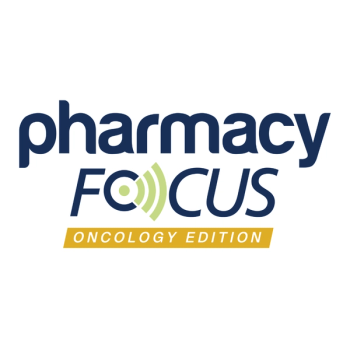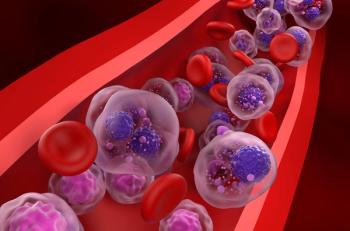
- May/June
- Volume 10
- Issue 3
Specialty Pharmacy Takes Center Stage in Cancer Care
The oncology pharmaceutical market is rapidly growing and changing.
The oncology pharmaceutical market is rapidly growing and changing. In the midst of these changes, specialty pharmacy stakeholders are being challenged, and have a responsibility, to take on a greater role than ever before in guiding how oncology care is delivered.
Over the past 5 years, the FDA has approved 61 cancer drugs. Advances in research and development have resulted in new chemotherapy drugs and new indications for existing therapies. Treatments are being developed that attack cancer cells in different and more effective ways, harnessing cutting-edge science and genetic manipulation. Targeted treatments and immunotherapy, including chimeric antigen receptor T-cell agents, provide a way to treat a tumor based on its specific genetic makeup rather than its location in the body. Targeted therapy zeroes in on the changes that make cancer cells different from healthy cells, whereas immunotherapy uses the immune system to help find and attack cancer cells.
These advancements are good news for patients who are achieving better outcomes, often with treatment regimens that have fewer adverse effects (AEs) than previous chemotherapies. The oncology pipeline continues to be strong, with more than 1100 drugs and vaccines in various stages of development.
The Rising Cost of Cancer
The mortality rate from cancer has declined steadily over the past 2 decades, yet the disease continues to have a tremendous impact on patients and the health care industry. There are more than 100 types of cancer. For women, the most common types are breast (30%), lung (13%), colon (7%), and uterine (7%); for men, prostate (19%), lung (14%), colon (9%), and bladder (7%). The breadth of types, as well as subtypes based on genetic variation, contribute to the complexity of treating cancer. This also means that we have the opportunity to be more precise with medications.
Newer treatments come with higher costs, however, and oncology, medical, and pharmaceutical spend continues to rise. The Express Scripts 2018 Drug Trend Report shows that oncology has the highest drug trend among other therapy classes, at 18%.1
The Critical Role of Oncology Specialty Pharmacy
With innovative new therapies on the market and hundreds more in development, many patients with cancer are surviving and thriving, living with the disease as a chronic condition. Simultaneously, the number of oncologists is projected to decrease over the next decade, as will the time they have to spend with patients. In addition, oncologists are reporting increased administrative burden and patient volumes, with a greater percentage of oncologists than ever before (63%) reporting an increase in personal workload.2
Specialty pharmacy has always been more than a mode of getting a drug to a patient. Now, however, our role as specialty pharmacy care providers in the overall care continuum is increasingly critical. This role will only grow as physicians have less time and resources to support patient needs related to their drug therapy.
Specialty care that meets the needs of the ever-changing oncology market should include these goals:
- Oncology-specific clinical expertise. We know that oncology-specific care and counseling help patients achieve the best outcomes. Oncology is an umbrella term for a remarkable spectrum of diseases, and gener-lized expertise is insufficient. Pharmacists need to be hyperfocused on the types of cancer they are helping to treat, as well as new treatments and drug combinations. Experience with these medications and knowing how to address barriers with practical counseling for patients are critical.
Four in 10 oncologists specialize in specific tumor types, so it makes sense that a specialty pharmacist has that same level of expertise. At Accredo, our oncology pharmacists are 100% dedicated to cancer care. They receive specialized training and focus on specific types of cancer, which allows for a deeper level of clinical knowledge. Our pharmacists understand the market landscape and treatment paradigms for particular tumor types based on area of study and patient experience.
The importance of this focused expertise is especially critical for childhood cancers. Physicians treating children with cancer face a lack of approved drugs specifically for the pediatric population. Typically, less than 4% of oncology funding goes to the research and development of therapies for children. Safety concerns are a factor in this shortage of pediatric research. Pharmaceutical manufacturers must have the safety of a product established in adults before testing in children. That leaves physicians and pharmacists to face the challenge of exercising professional judgment regarding pediatric administration. These decisions require a strong clinical perspective that comes from being familiar with oncology drugs and experience with pediatric patients.
- Support for whole person health. Recognizing that a cancer diagnosis can affect every aspect of a patient’s life, a specialty pharmacy needs to go beyond pharmaceutical care. A staff social worker can connect patients to counseling and support close to their home. In addition, specialty pharmacy can play an important role in removing some of the financial burden patients face. In 2018, Accredo’s proactive co-pay coordination team managed $625 million in co-pay assistance for qualified patients.
Severe malnutrition and weight loss play a role in at least 1 in 5 cancer deaths. Proper nutrition is a critical element of patient care that can support recovery from chemotherapy or radiation therapy, prevent unnecessary hospitalization, and improve quality of life. Accredo offers TherapEase Cuisine, a patented, web-based oncology nutrition service available to all of oncology patients. For critical or complex cases, patients may engage with our oncology dietician.
- Specialized clinical model. Each time a patient’s treatment changes, so should the clinical model that guides patient care. Many of these medications have significant AEs and challenging treatment schedules. A compliance and persistence program should be specific to the AEs profile and needs of a medication, taking into account patient demographics, rapidity of disease progression, and ultimate goals of therapy. Patients should be engaged at regular points in their care to discuss drug-specific barriers to adherence with a clinician. In addition, some therapies require laboratory testing, which pharmacists can assist in monitoring. The verification of lab data can provide an additional safety check to potentially avoid serious AEs. Some therapies may require dosing adjustments based on blood pressure, which specialty pharmacies can also assist in monitoring. Such diagnostic monitoring is increasingly becoming a part of patient care. The specialty pharmacy, because of frequent engagement with patients, can play a key role in these types of activities. It also is important to identify and engage patients who are most at risk before they become nonadherent. For example, patients with chronic myeloid leukemia are particularly at risk for mutational resistance to their medication if they are not adherent, which leads to changes in therapy, poor outcomes, and greater costs. At Accredo, we use predictive risk models to identify patients with high risk factors for nonadherence associated with a particular patient type and treatment goal. Additional patient outreach is based upon a patient’s propensity to be nonadherent. Clinical discussions are based on scientific evidence specific to the risk factors associated with therapy specific barriers to nonadherence.
- Convenience in technology. Patients and physicians alike are looking for ways to save time while receiving tailored attention. This means tools are needed to interact with patients and physicians on their terms. Some patients look for texting reminders and refill capabilities, whereas others choose to use direct phone lines. Easy-to-use patient websites and mobile applications help improve adherence and support patient care. In an Accredo analysis, we found that oncology patients using texting for refills were 8% more adherent than those who did not.
As discussed earlier, oncologists are spending more time on administrative duties. The less time they spend on these tasks, the more time they can spend with patients. A specialty pharmacy with a well-designed physician’s portal allows for oncologists to quickly access referral status and prior authorization support.
- Broad product portfolio. Specialty pharmacies are awarded access to medications based on their ability to deliver on items previously identified. Broad access to oncology medications means a better experience for patients and physicians and greater continuity of care. A specialty pharmacy with distribution capabilities for a diverse product portfolio creates a partnership that improves patient access to therapy, ensures medication reaches its destination quickly and safely, and alleviates the health care provider’s financial burden related to management of in-office drug inventory.
Specialty pharmacy must continue to find innovative solutions for this patient population and for the financial health of our industry. Providing a focused level of care to oncology patients from pharmacists, nurses, and support teams who are specially trained to support the specific requirements associated with the unique characteristics of oncology medications is critical to achieving the best outcomes—clinically, emotionally, and financially.
References
1. 2018 Drug Trend Report. St. Louis, MO: Express Scripts; 2018. lab.express-scripts.com/lab/drug-trend-report/2018-drug-trend-report. Accessed March 3, 2019.
2. The 2018 Genentech Oncology Trend Report. 10th ed. South San Francisco, CA: Genentech; 2018. genentech-forum.com/content/dam/gene/managedcare/forum/pdfs/Oncology-Trends/2018_Genentech_Oncology_Trend_Report.pdf. Accessed March 3, 2019
Articles in this issue
over 6 years ago
Ovarian Cancer: The Silent Killerover 6 years ago
Nivestym by Pizer, Incover 6 years ago
Free Drug Starter Programs Are Not All Alikeover 6 years ago
How Does a Pharmacy Train Staff to Handle HDs?Newsletter
Stay informed on drug updates, treatment guidelines, and pharmacy practice trends—subscribe to Pharmacy Times for weekly clinical insights.








































































































































































































